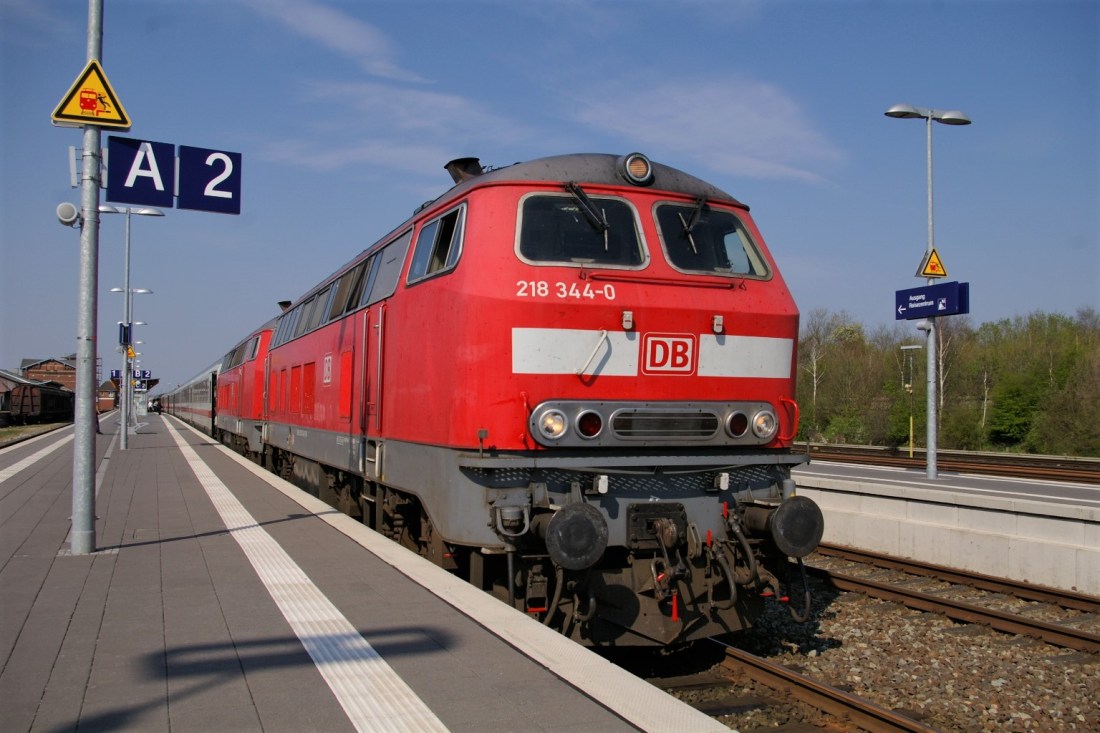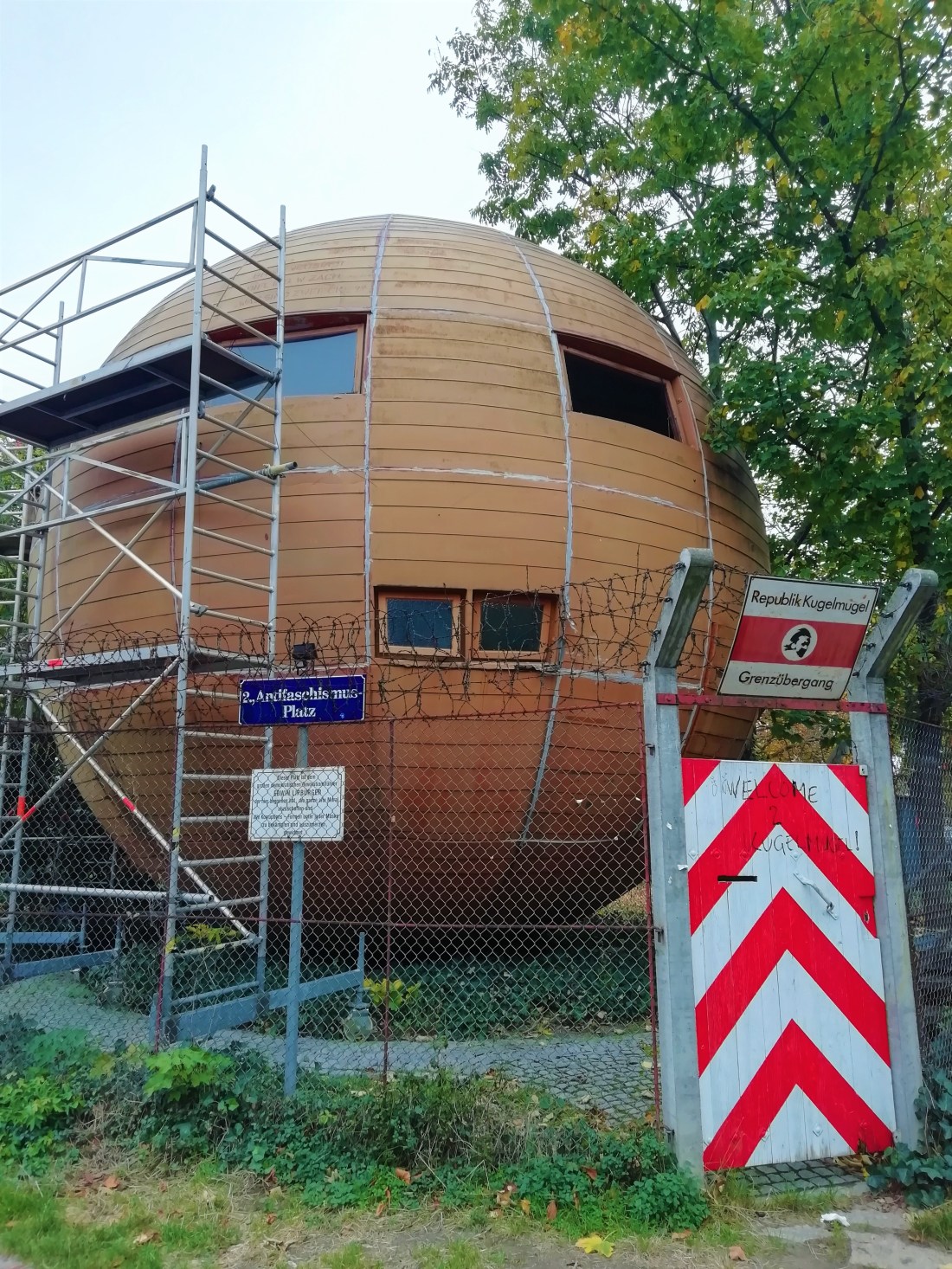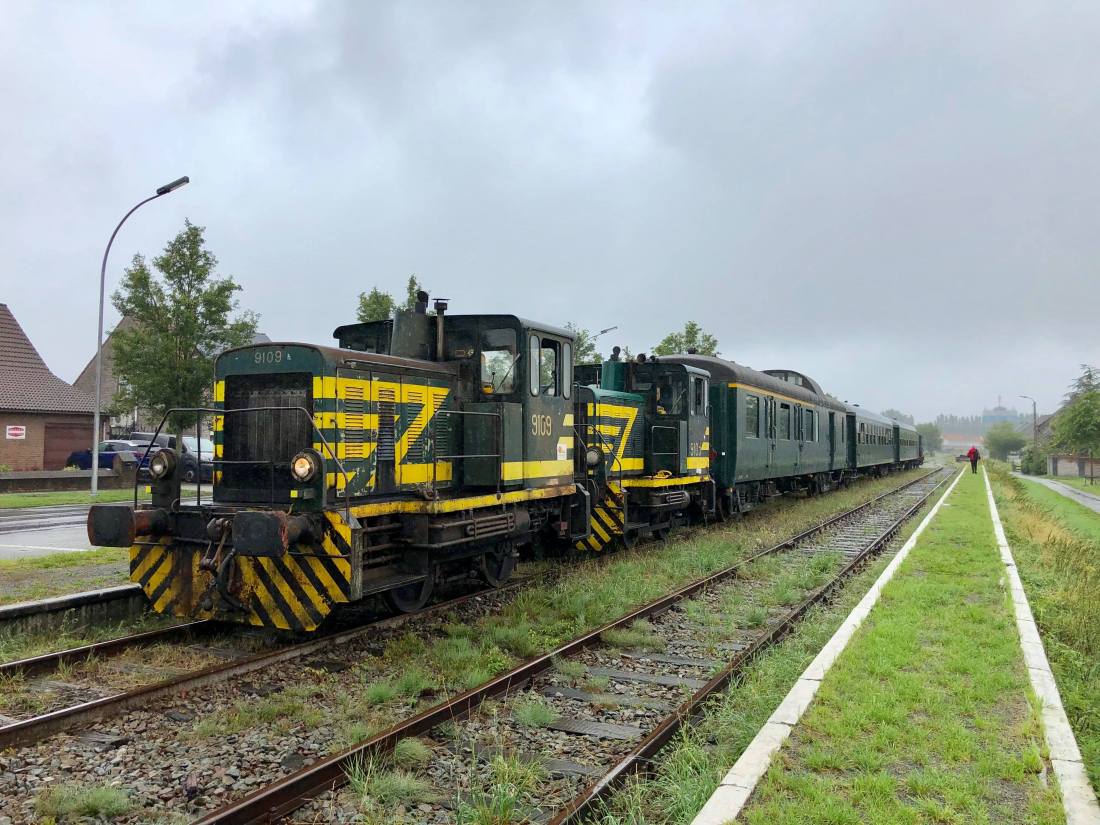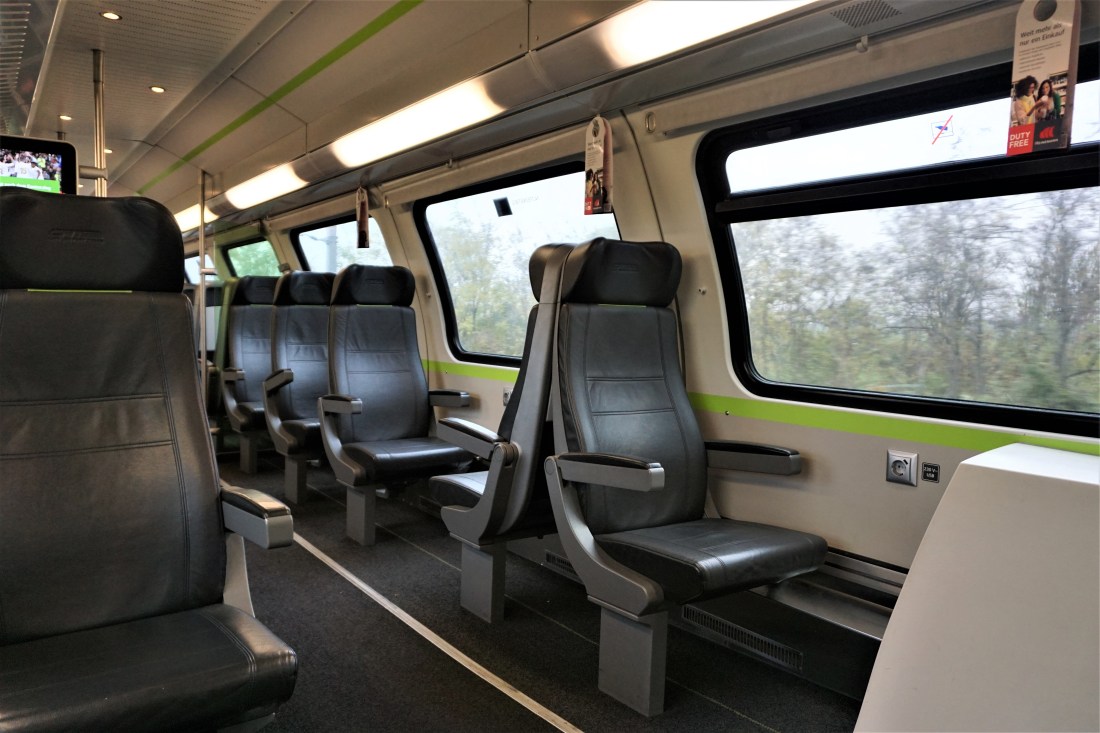Due to some initial criticism that I was felt to be focusing on my favourite locos (which – if you weren’t aware – are Germany’s class 218 “rabbit” diesel-hydraulics), they haven’t received much coverage on this website to date. However, I think it’s time that that was addressed.

My all-time favourite loco, 1974-built Krauss-Maffei diesel-hydraulic 218 344, will hopefully see its 50th birthday in service on the Marschbahn, on which it has operated since 2009. It is seen here at Niebüll with 218 389 on 20/04/14 (JW)
One of Germany’s most famous railways is that from Hamburg, via Itzehoe, Husum and Niebüll to the terminus of Westerland, on the North Frisian island of Sylt – the northernmost 107 miles of which, north of Itzehoe, are not electrified. This is known as the “Marschbahn”. That an unelectrified destination has retained a long-distance (Intercity) service to cities such as Stuttgart and Dresden is noteworthy, but is explained by the fact that Sylt is not only a tourist destination but one favoured particularly by the rich, famous and above all influential – indeed, the village of Kampen, on Sylt, is home to Germany’s most expensive residential street. In this way, Sylt is frequently compared to Montauk, which may be familiar to those of you who have enjoyed the diesel locos on the Long Island Railroad in the USA.
As I mentioned, Sylt is an island, and it is connected to mainland Germany only by a man-made causeway – the Hindenburgdamm. This causeway was completed in 1927 and only carries a railway, which was doubled in 1972 to accommodate the ever-increasing volume of traffic to and from the island. The island does have an airport (GWT), which is served by mostly seasonal flights from German cities, and also an eight-sailings-a-day ferry connection to Havneby in Denmark. Aside from that, the railway is the only method of access.
Intercity services
Intercity services run to Westerland year-round, but some of them are seasonal – which does not mean Summer-only, but holiday periods throughout the year. These have been handled by diesel-hydraulics of the V160 family for nearly half a century. In the last few years, attempts have been made to replace them on this work with modern TRAXX class 245s, but these have been wholly unsuccessful. In short (and trying not to let my prejudices show too much!), breaking from a tradition that has served Germany well, the fleet was ordered without first trialling a prototype, and its new four-engine technology and computer control has not proven itself apt for this particular route – although 245 021 to 245 027 were delivered up there in 2015/16 with the plan drawn up in an office in a Berlin high-rise across Germany was that 1×245 can do the work of 2×218. Consequently, they have been banned from the IC services on the route except for in emergencies, and pairs of 218s will continue for the foreseeable – currently predicted up to 2024/25.
The problem with this is that immediately after the arrival of the 245s – which coincidentally occurred roughly seven years after the incumbent 30-strong fleet of 218s had been overhauled and assembled at Niebüll, and therefore when the seven-year term of their overhauls expired – numerous perfectly good 218s were sent for cannibalisation and in some cases even scrap, rather than Bremen works. This has meant that Niebüll has, for the last few years, had a severe traction shortage entirely of DB’s own making. Worse than that, it has had – and continues to have – to make this up by hiring in a rolling cast of 218s from elsewhere in Germany to bolster its own fleet. Some of these are from elsewhere on DB (e.g. class 218.8 “Abschlepploks” – a dedicated fleet of ICE rescue locos, as well as passenger-sector 218s from other depots), and some are hired in at top dollar from DB’s competitors.
The current native Niebüll 218 fleet is as follows: 218 307, 218 315, 218 321, 218 322, 218 341, 218 344, 218 345, 218 366, 218 369, 218 379 (although it’s been months since that one last ran, to my knowledge), 218 380, 218 385, 218 389 and 218 397.
Their Intercity diagrams are as follows:-
IC2311 09:26 Westerland – Itzehoe 11:43
IC2310 14:15 Itzehoe – Westerland 16:34
IC2314 10:14 Itzehoe – Westerland 12:34
IC2315 13:26 Westerland – Itzehoe 15:43
IC2072 12:14 Itzehoe – Westerland 14:34
IC2073 15:26 Westerland – Itzehoe 17:42
IC2375 10:56 Westerland – Itzehoe 13:10
IC2374 16:42 Itzehoe – Westerland 19:04
IC2375/IC2374 are largely seasonal trains. In the current timetable (May-December 2019) they run on an occasional basis as push-pull sets with a single 218, usually drawn from 218 307, 218 321 and 218 322 or occasional hire-ins) to and from Hamburg Altona. The 218 works throughout in both directions. At the time of writing, there are only three days left of operation that way (12th-14th December 2019). From the December 2019 timetable change, when they run, they should run as above.
Of interest, at least one of the above turns is worked by a Hannover crew, who have signed the route specifically to keep 218s on their traction cards in order to drive the 218.8 that is stabled in that city as a rescue loco if required.
A Niebüll 218 (again drawn from 218 307, 218 321 and 218 322 or hire-ins) works the push-pull set on the IC trains to and from Fehmarn Burg, too.
Car trains
As mentioned above, there is no road access to Sylt. However, the island does have a fairly extensive road network! The ferry service is relatively sparse and links Sylt only to Denmark, and therefore the solution to road travel to and from mainland Germany is a frequent car-carrying train shuttle (“Sylt Shuttle”) from Niebüll to Westerland. The car train terminal at Niebüll is directly linked to Bundesstraße 5, and is not far from Bundesautobahn 7, the 1000km-long motorway that links the German/Danish border to the German/Austrian one – so it is effectively part of the road network as much as it is a rail service. The high season timetable sees car trains up to every half an hour in each direction, and they are often full. These carry not only private cars but also coach trips, lorries, etc – they are a real lifeline to the island.
Historically, they have not conveyed accommodation for the casual “foot passenger”. Occupants remain in their vehicles for the journey (you can see a video of a journey with hydraulic power on YouTube here). In the past, haulage enthusiasts have had to resort to thumbing a lift with strangers or clubbing together to hire a car. However, this changed in 2015 with the advent of the “Sylt Shuttle Plus”. In effect, this was a path raid when DB’s monopoly was challenged (see below) and ever since its creation, has caused the utmost controversy, which rages on even now (see news article from late 2019 here). It consists of class 628 two-car DMUs being added to car trains across the Hindenburgdamm – trains with ‘D’ classification in the DB journey planner – which generally then run on from Niebüll down to Bredstedt, change ends, and return to Niebüll to be added to another car train back to Westerland. Not every car train conveys a DMU, and it has been known that the DMUs can simply fail to turn up. They generally carry around fresh air, as thanks to the shunting required at both Niebüll and Westerland, they do not really provide an attractive alternative to the “normal” passenger to the standard service. In an attempt to remedy this much-maligned waste of diesel in these Greta Thunberg-inspired times, a special fare has been introduced for use solely on Sylt Shuttle Plus services, but that has not fully precluded mass cancellations of the DMUs – even if they are shown as running on the departure boards. Consider yourself forewarned, but if you can manage to pin one down, it allows you to see a very interesting operation from a closer vantage point.
The car trains can be powered by single 245s or pairs of 218s; although swaps onto ICs can occur occasionally at Westerland in order to take those “outstabled” at Itzehoe back to depot for maintenance, the locos on car trains generally do not work on ICs on the same day.
As I mentioned, DB’s monopoly on the car trains was challenged in 2015 – with the arrival of the American firm RDC (Railroad Development Corporation). These now run a competing service using the same terminals, using Siemens “Vectron” class 247 diesels – 247 908 “Debbie” and 247 909 “Anne” – under the “AUTOZUG Sylt” brand. This generally requires both to be available for service on a given day as two sets are used simultaneously at certain times. As a result, class 251s (ex-NSB Di6s) – variously 251 002 and 251 003 – are kept on hand in order to cover for unavailability. However, these trains do not convey walk-on accommodation, so you are back to the old fashioned method of thumbing lifts or hiring vehicles if you’d like to get these in the book…
Regional Expresses
Between 2005 and 2016, RE services on the line were operated by the Nord-Ostsee-Bahn (NOB) – and, despite the fact that this displaced my beloved 218s, I have to say that they were a very good operator, using a mixture of class 251 and 223 power with Bombardier “Married Pair” stock. 2014, however, marked the beginning of a deterioration. The organisation that co-ordinates public transport in Schleswig-Holstein – now known as “NAH.SH” – decreed that a fleet of 15 brand-new Bombardier TRAXX class 245.2 locomotives (245 201–245 215) would be procured by the investment company Paribus for use specifically on the Marschbahn regional trains, regardless of operator. These entered traffic from late 2015. At about the same time, it was announced that the franchise would be returning to DB Regio as of the December 2016 timetable change, using the 245.2s and the existing stock.
Problems with the 245.2s were legion from day one. Initially, they suffered from frequent overheating issues and required fire brigade attendance worryingly often. Software problems were frequent and oil and coolant issues have been frequently reported as the cause of failures too. In October 2017, it was announced that they must again go through a rolling programme of works visits for software updates, which took many months to complete.
The 245.2s are back in service, but reliability does seem to continue to be an issue. They continue to be supplemented by “red” 245s – which at least spares some of DB’s blushes by finding some gainful employment for 245 021 to 245 027 – which also have a very leisurely turn on Intercity work between Gotha and Gera, in the former East Germany.
Summing-up
The Marschbahn is one of my favourite railways, and one I feel very comfortable on – and not only because one of the major towns along it, Husum, is twinned with my home town of Kidderminster! – although nowadays it is a very challenging one to bash, and whether you are after lots of different numbers in the book or lots of miles behind particular locos, the moves never seem to be ideal.
In recent years, it has gained the nickname among some less charitable enthusiasts of the “Farcebahn”, which is driven by the poor punctuality displayed by many trains along it. Although I clearly have my partisan loyalties, being realistic this is almost entirely nothing to do with the long in the tooth but reliable 218s, and everything to do with a needlessly over-ambitious timetable (to accommodate the largely unused SSP services), delays to long-distance services that in some cases have travelled 500 miles by the time they reach Itzehoe on a DB that is no longer a byword for punctuality, and indeed issues with the problem children 245s. Everything has a knock-on effect, though, and it is not uncommon for your plan to disappear out of the window due to missed connections.
Despite those negatives, I would wholeheartedly recommend a visit. It will be the last bastion of class 218 haulage, and although the stock is all air-conditioned with few (if any) opening windows, still allows you to enjoy them working hard at design speed.









